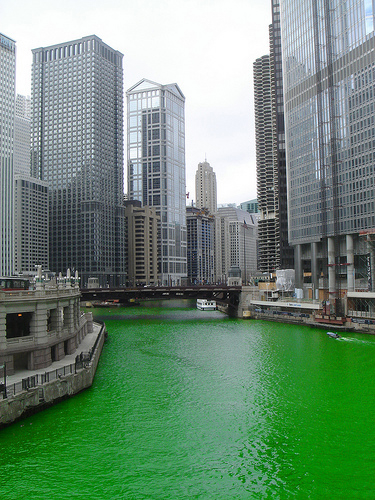
St. Patrick’s Day
This post is also available in / Esta entrada también está disponible en ESPAÑOL (SPANISH)
St. Patrick’s Day is celebrated on March 17, his religious feast day and the anniversary of his death in the fifth century. The Irish have observed this day as a religious holiday for over a thousand years. On St. Patrick’s Day, which falls during the Christian season of Lent, Irish families would traditionally attend church in the morning and celebrate in the afternoon. Lenten prohibitions against the consumption of meat were waived and people would dance, drink and feast—on the traditional meal of Irish bacon and cabbage. Did we mention they would drink? ;)
Today, St. Patrick’s Day is celebrated by people of all backgrounds in the United States, Canada and Australia. Although North America is home to the largest productions, St. Patrick’s Day has been celebrated in other locations far from Ireland, including Japan, Singapore and Russia.
In modern-day Ireland, St. Patrick’s Day has traditionally been a religious occasion. In fact, up until the 1970s, Irish laws mandated that pubs be closed on March 17. Beginning in 1995, however, the Irish government began a national campaign to use St. Patrick’s Day as an opportunity to drive tourism and showcase Ireland to the rest of the world. Last year, close to one million people took part in Ireland ‘s St. Patrick’s Festival in Dublin, a multi-day celebration featuring parades, concerts, outdoor theater productions and fireworks shows.
The Chicago River on St. Patrick’s Day
Chicago is famous for a somewhat peculiar annual event: dyeing the Chicago River green. The tradition started in 1962, when city pollution-control workers used dyes to trace illegal sewage discharges and realized that the green dye might provide a unique way to celebrate the holiday. That year, they released 100 pounds of green vegetable dye into the river—enough to keep it green for a week!
Today, in order to minimize environmental damage, only 40 pounds of dye are used, making the river green for only several hours. Although Chicago historians claim their city’s idea for a river of green was original, some Savannah natives believe the idea originated in their town. They point out that, in 1961, Savannah mayor Tom Woolley had plans for a green river. Due to rough waters on March 17, the experiment failed, and Savannah never attempted to dye its river again.

© 2011 – 2020, The Foodies’ Kitchen. All rights reserved | Todos los derechos reservados
This post is also available in / Esta entrada también está disponible en ESPAÑOL (SPANISH)



